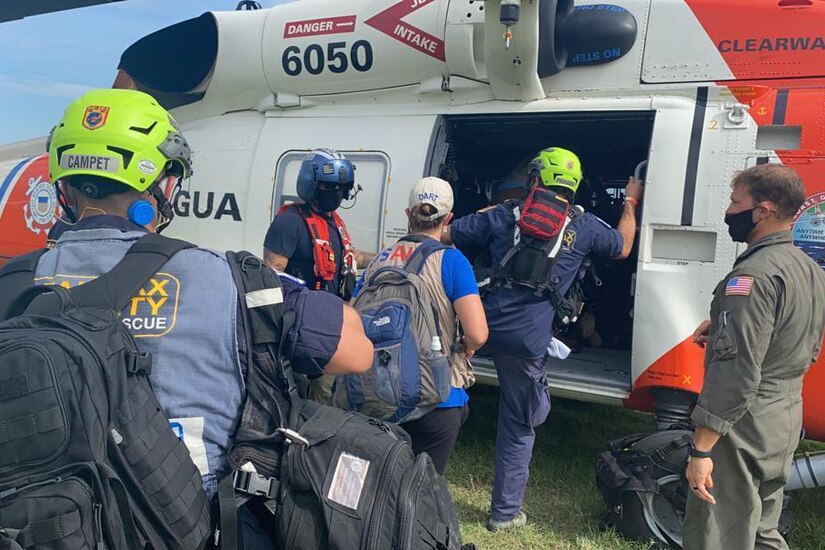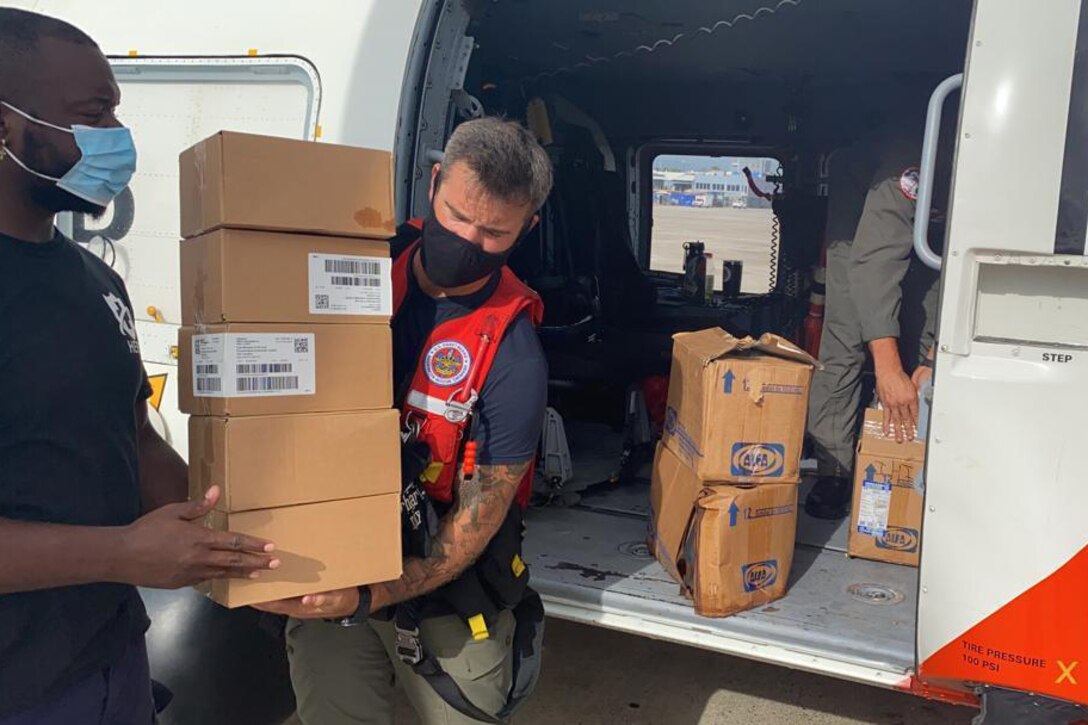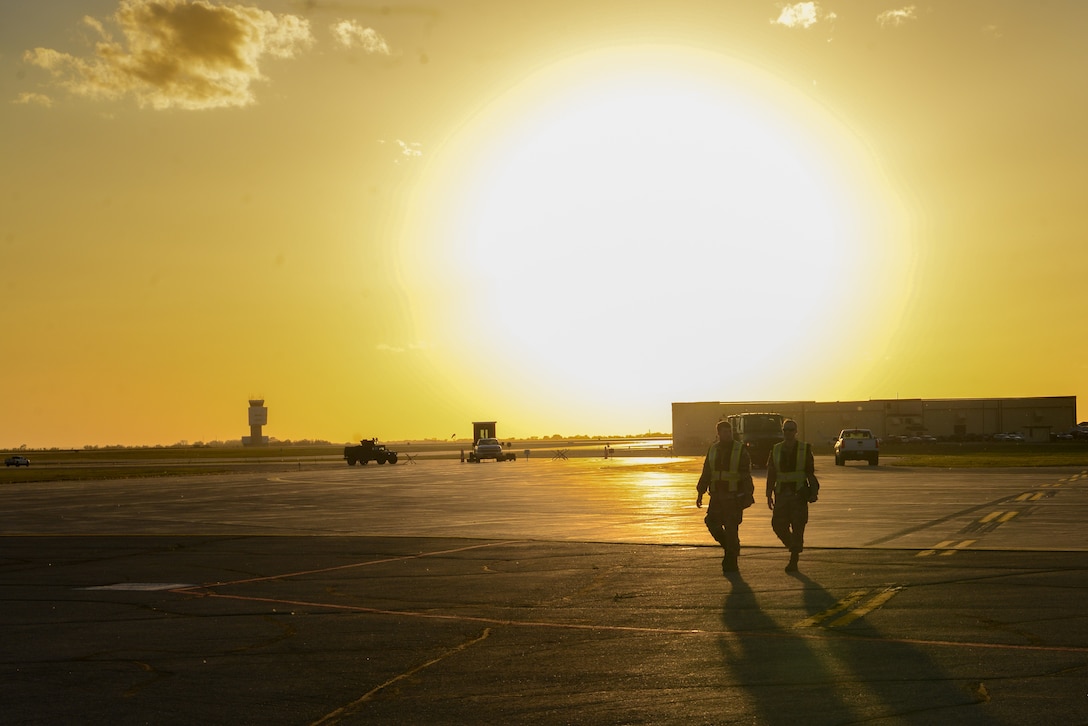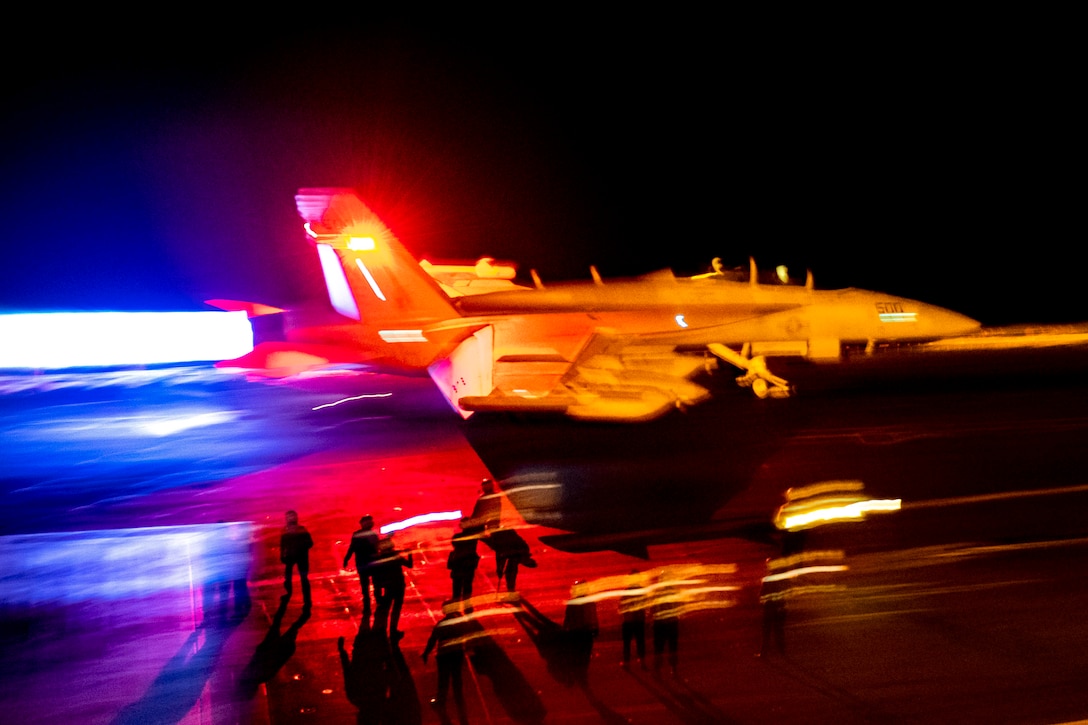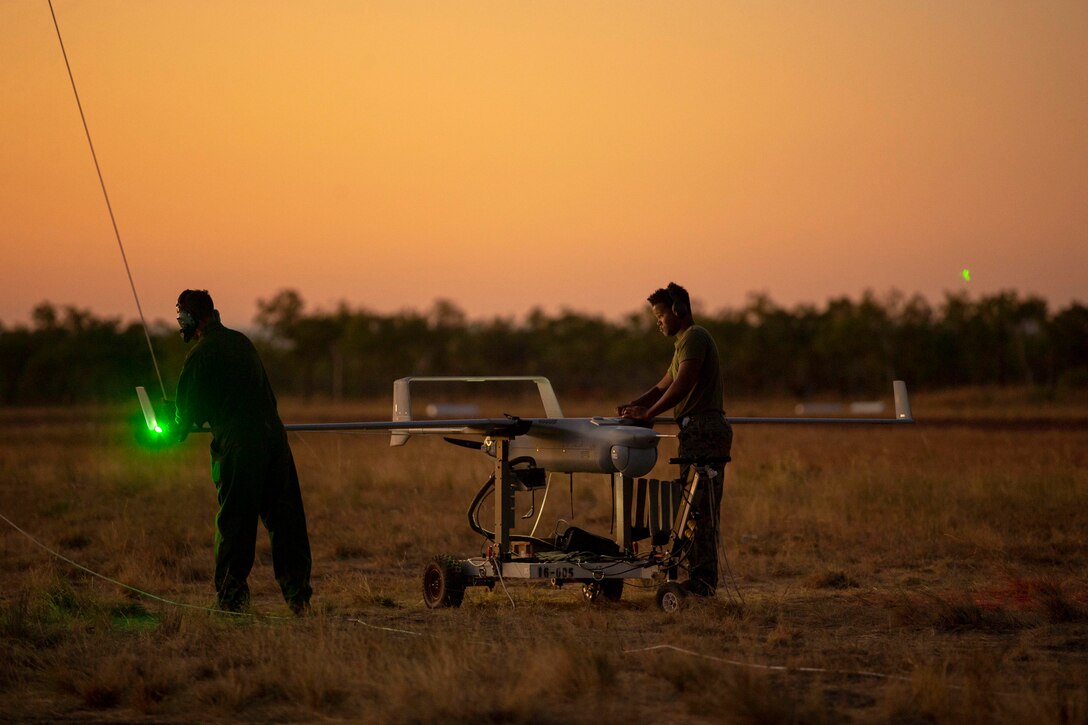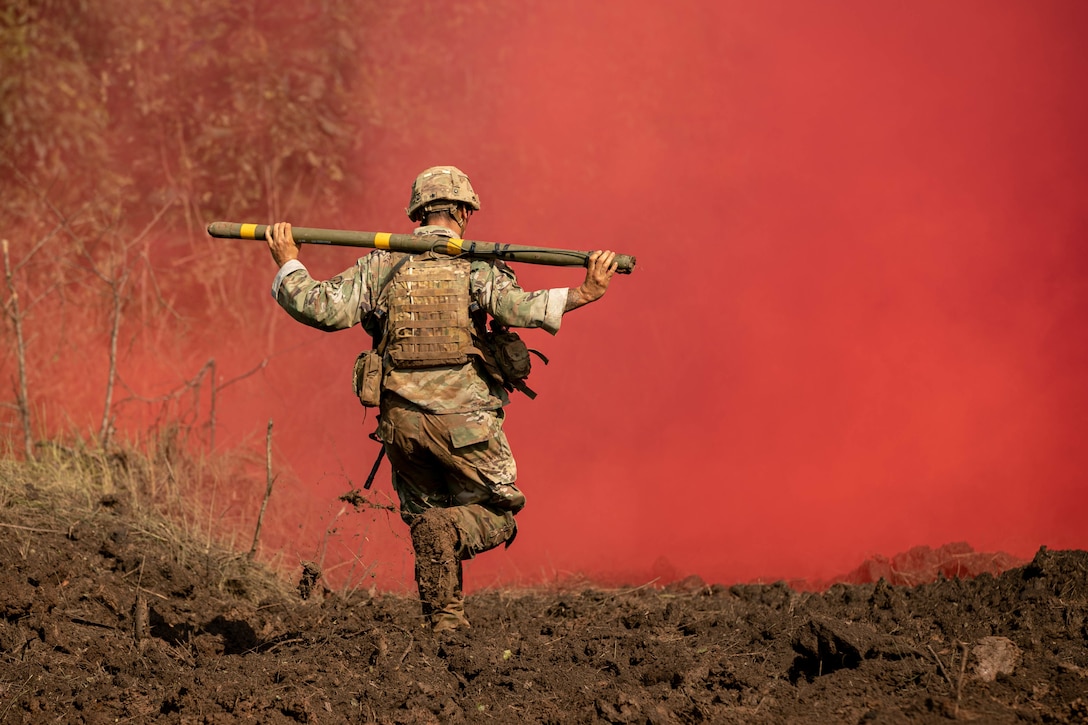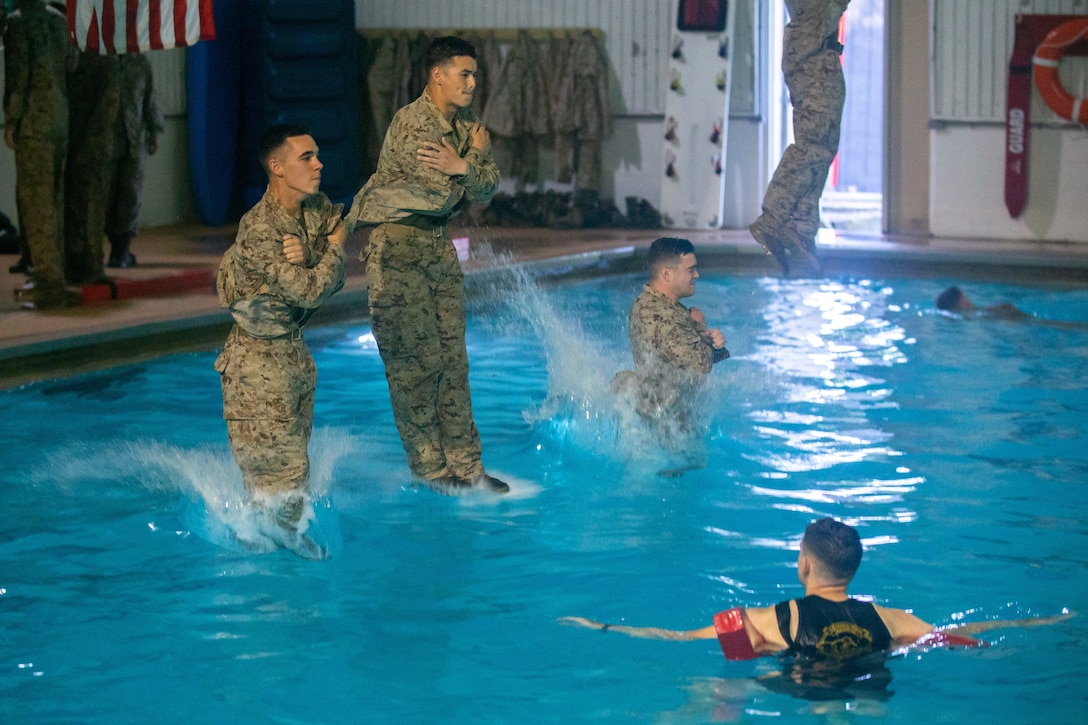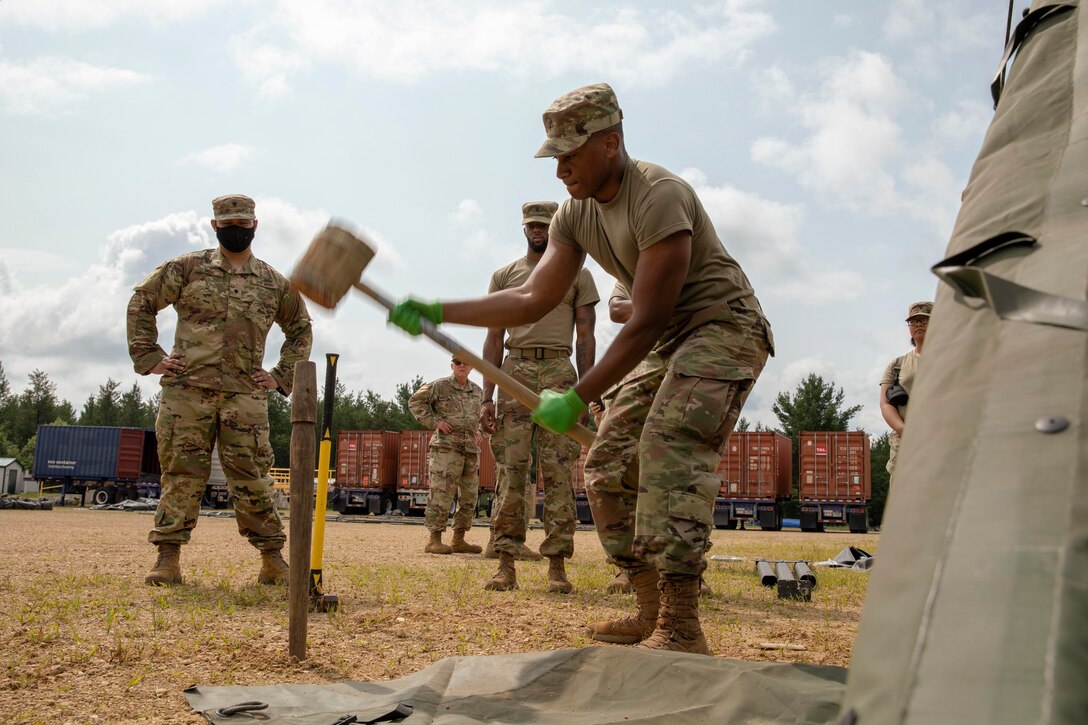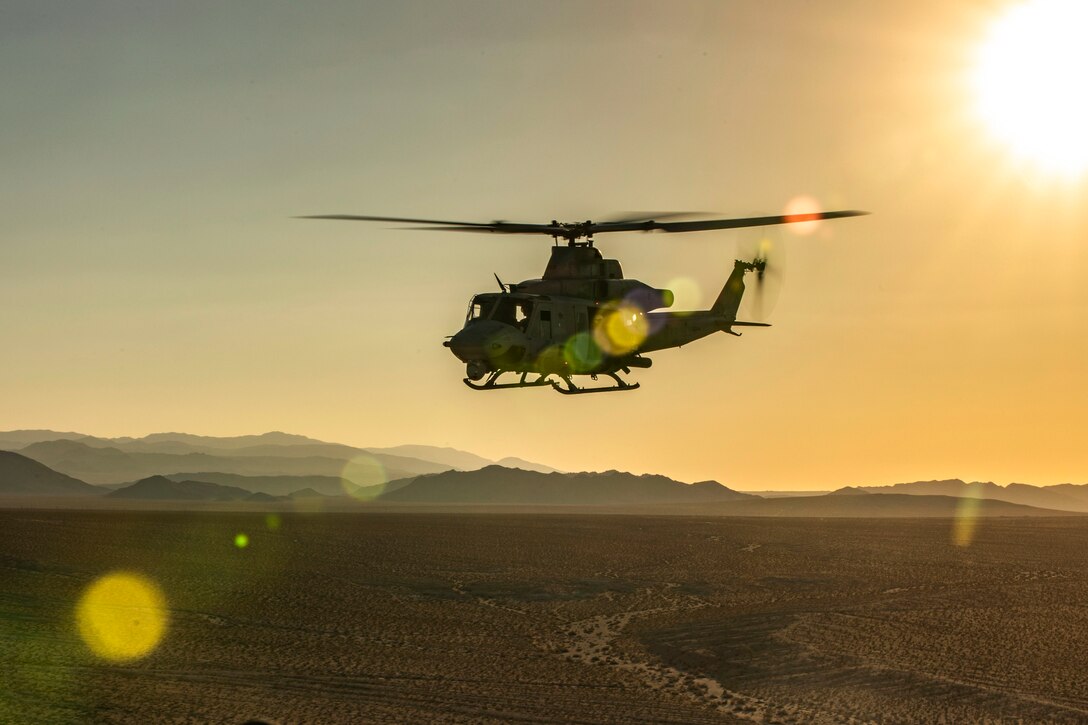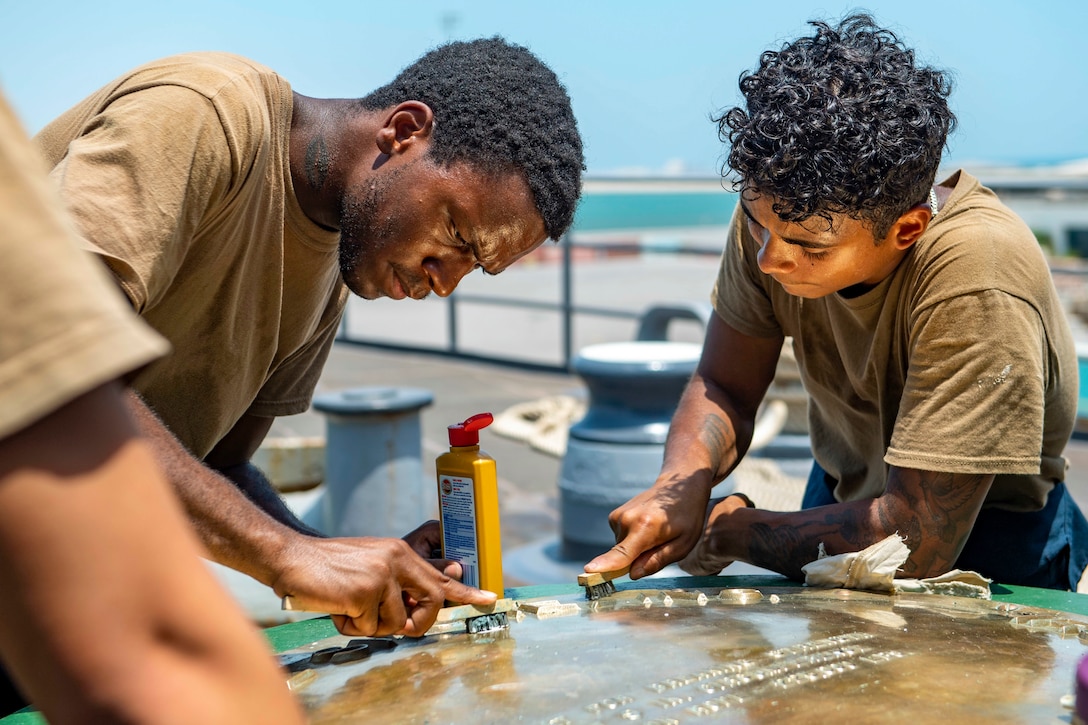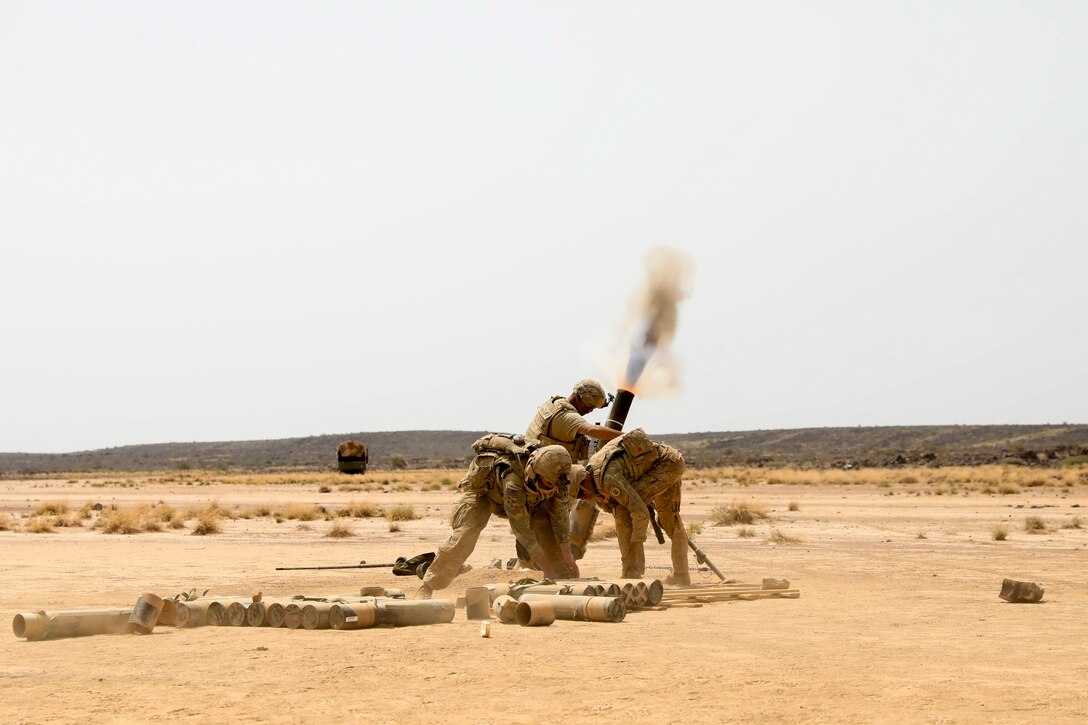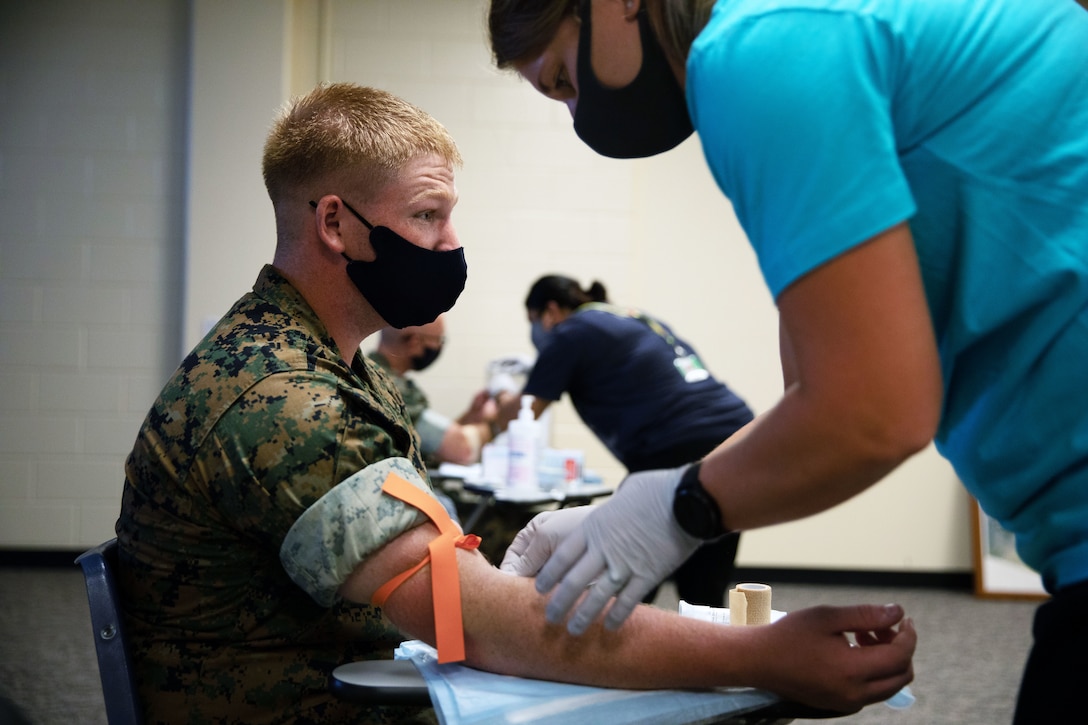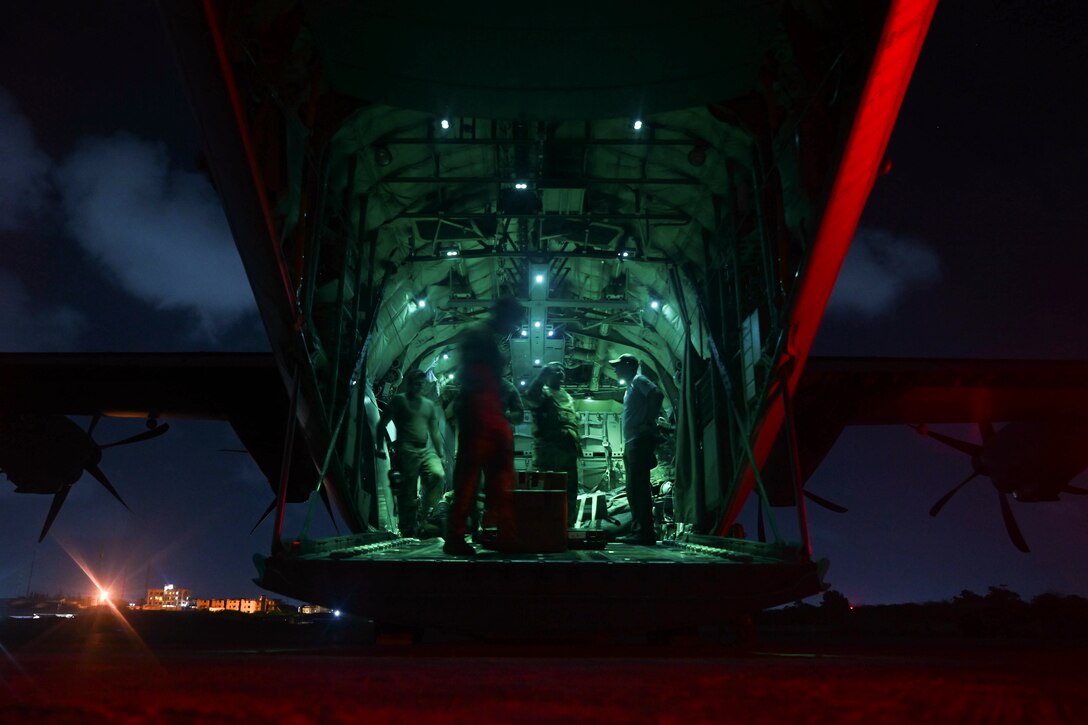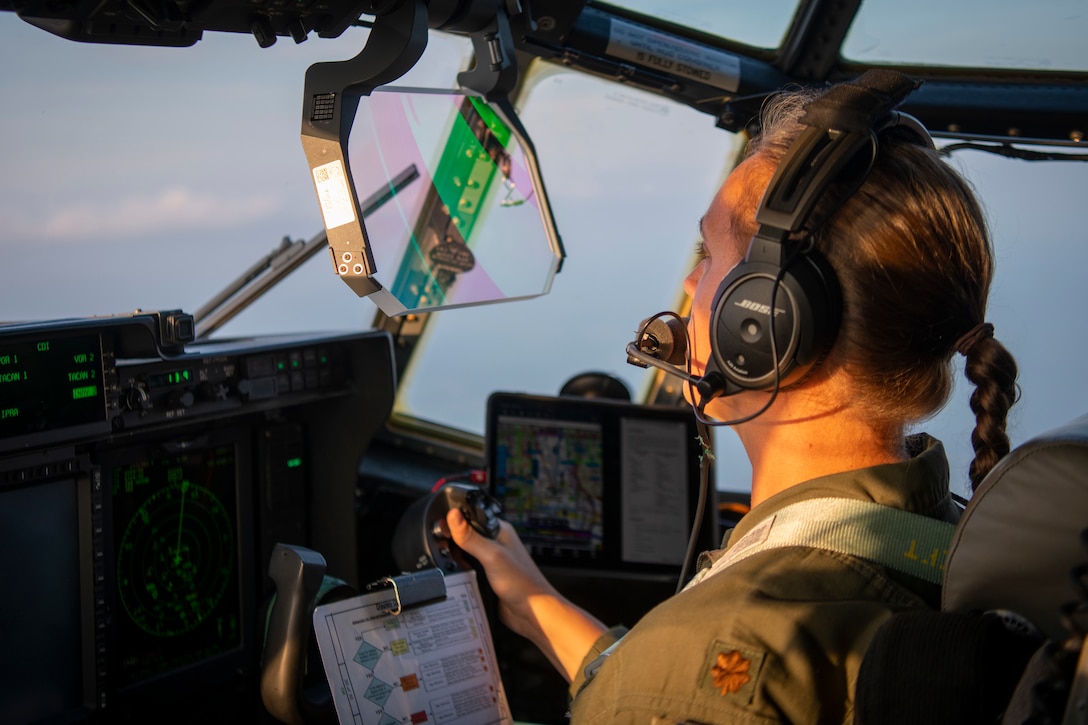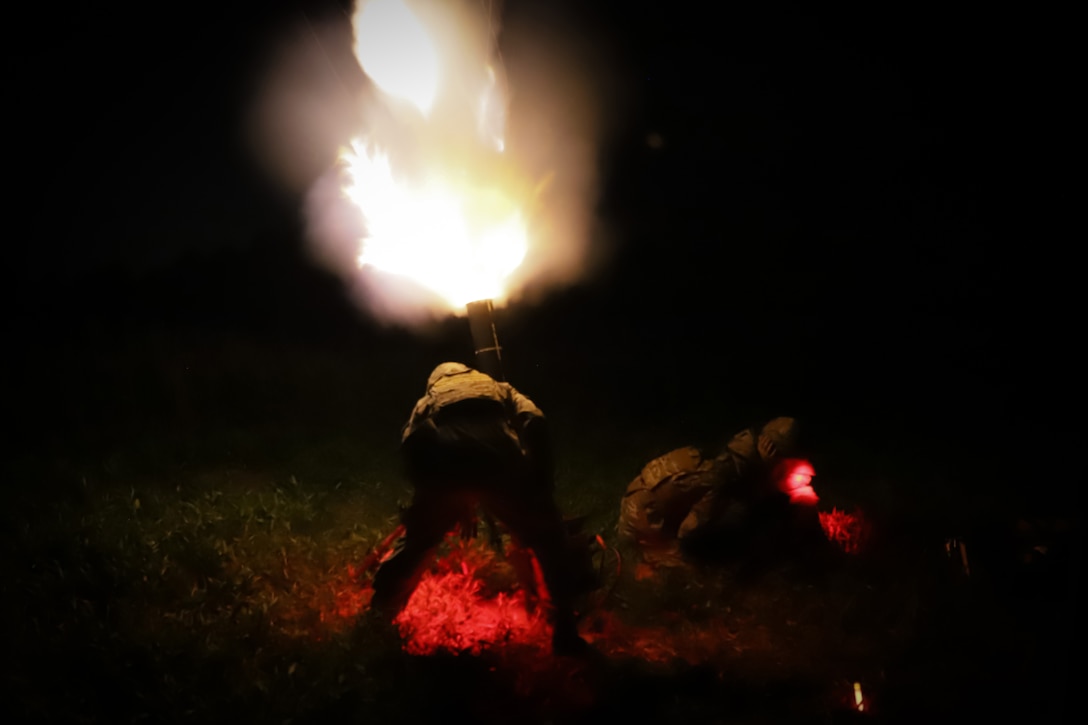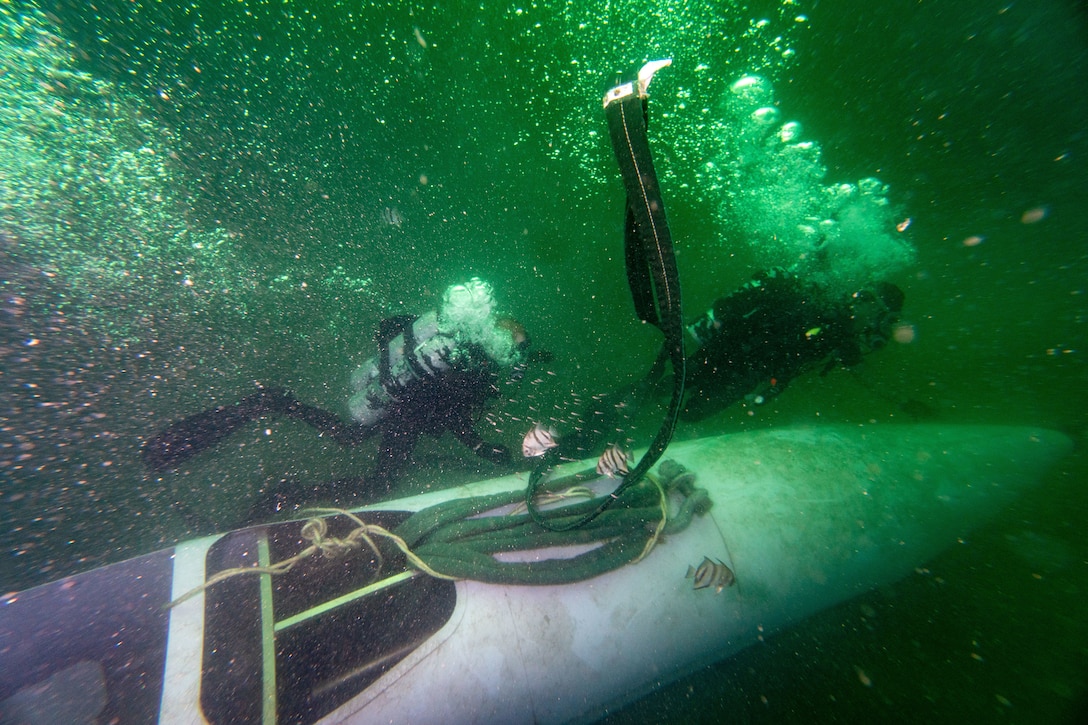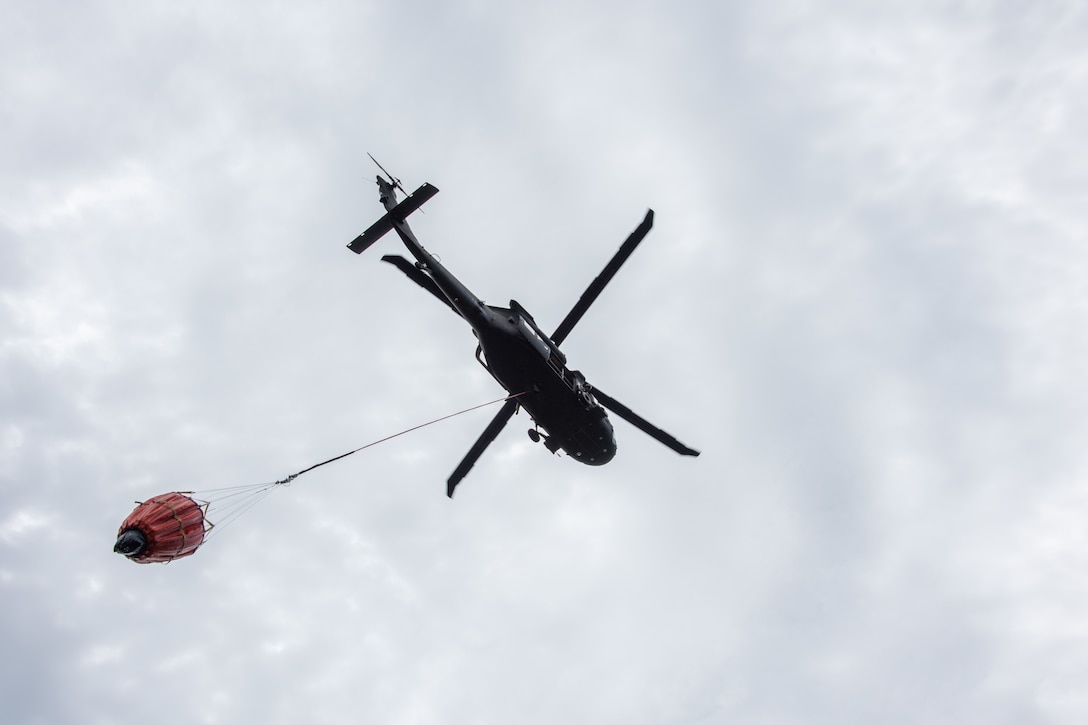Aug. 16, 2021
Pentagon Press Secretary John F. Kirby; Garry Reid,
Afghanistan Crisis Action Group; Major General Hank Taylor
PRESS SECRETARY JOHN F. KIRBY: Good afternoon,
everybody. I know we gave you an update this morning, so I brought a
couple of additional briefers with me this afternoon to flush out some
more detail from the kinds of things that we talked about earlier today.
So with me is Major General Hank Taylor of the Joint Staff. He's the
Director of Current Operations, and Garry Reid, who I think you all
know, he is Director of our Afghanistan Crisis Action Group.
I'm going to ask each gentleman to come up and say just a few words,
give you some updates from their perspective, operations in the
general's case and on the SIV process and what DOD is trying to help
along with that from Mr. Reid's perspective, and then we'll get to some
Q&A for a little bit. I will moderate that Q&A, so I'll still be
up here calling on you, and we'll try to get through as many of you as
we can in the limited amount of time that we have.
So with that with the time being constrained I'm going to stop talking and bring up the general. General.
TAYLOR: Good afternoon. Thank you, Mr. Kirby. I want to reinforce
what has already been said today and a little bit earlier. The U.S.
military remains focused on the present mission: to facilitate the safe
evacuation of U.S. citizens, SIVs, and Afghans at risk, to get these
personnel out of Afghanistan and quickly and as safely as possible.
When this plan was put in place we prepared for a number of
contingencies and recognized that events unfolding at HKIA has drawn
concern and attention throughout the world. We're actively monitoring
the situation of what's happening on the ground, and we will continue to
support the commander and adjust forces as necessary to allow the
mission to be successful.
Our troops are trained professionals. They understand the complexity,
the urgency, and the importance of their mission. They remain agile.
Our mission was and still is today to secure the airport so that we can
evacuate, as said earlier, U.S. citizens, SIVs, Afghans at risk out of
the country.
TAYLOR: We have approximately 2,500 troops that have moved into Kabul
within the last 72 hours and more will arrive soon. By the end of the
day we expect nearly 3,000 to 3,500 troops on the ground. First, for a
real time update, as of 15:35 local Eastern Time here, the airfield at
HKIA was open for operations. Shortly thereafter, the first C-17 landed
with U.S. marines on board and the next C-17 is preparing to land as we
speak, with members of the 82nd airborne division.
I'd also like to offer a couple of additional operational details.
More than 700 SIV applicants have departed Afghanistan in the past 48
hours by a combination of contract and commercial air, bringing the
total to date to nearly 2,000. And Mr. Reid here will have more details
on that.
The U.S. military continues to support or support of the State
Department with the closing of the U.S. Embassy in Kabul, moving several
hundred personnel by helicopter to HKIA. Those personnel remain safe
and are preparing to depart.
Forces continue to conduct operations, security operations at HKIA.
And as I said earlier, we are in charge of air traffic control and that
includes with commercial contract and military air. We expect to
maximize our throughput of all means of transportation over the next
coming days.
Again, our focus right now is to maintain security at HKIA, to
continue to expedite flight operations while safeguarding Americans and
Afghan civilians. We are proud of the professionalism and the skill of
the soldiers, sailors, airmen and marines are showing under
extraordinary circumstances at HKIA. And they are absolutely prepared to
the respond and self-defend if necessary.
Many of us have spent time in Afghanistan over the years and feel a
deep sense of connection to the current events. We are focused on the
safest evacuation of Americans and Afghans. Thank you.
REID: Thank you, General. Thank you, John. Ladies and gentlemen,
thank you for taking time today. I'm Garry Reid, I'm the lead for the
DOD Crisis Action Group for Afghanistan for matter pertaining to the
relocation of refugees and transportation of our embassy staff,
Americans, allies, and other partners from Kabul to their onward
destinations.
The Secretary established the crisis action group in early July and
we've been working very closely with the Department of State as a lead
agency since that time. Partnered with Department of Homeland Security,
our initial focus was to relocate the SIVs, finalize their visas and
resettle them into the United States with the help of our
nongovernmental organizations.
To date, nearly 2,000 Afghans have passed through this process,
joining more than 70,000 that have participated in the SIV program since
2005. Our military has done an outstanding job supporting this effort.
USNORTHCOM and U.S. Army North operating predominantly from Fort Lee,
Virginia have provided housing, food, medical treatment, medical
screening and other services to these Afghans. Our military embrace the
opportunity to recognize their contributions to combined operations in
Afghanistan by welcoming them into U.S.
As we prepare for even more arrivals, USNORTHCOM and the U.S. Army
are working to create additional capacity to support refugee relocation
in the U.S., including temporary sites under assessment at Fort Bliss,
Texas and Camp McCoy*, Wisconsin. There may be other sites identified if
services are needed -- additional capacity is needed.
At this point we're looking to establish 20 -- 22,000 spaces. We can
expand if we need to. As with the operation we've been supporting at
Fort Lee, persons that come to these locations will have been
prescreened by the Department of Homeland Security to enter on a
condition of full immigration processing once they arrive.
With this operation underway but given the urgency of the situation
in Kabul, our focus has shifted to supporting movement of our embassy
staff, American citizens, allies and other partners out of Kabul.
Starting on the August, -- on August 14th, we began movement of these
persons on Department of Defense aircraft, providing them
transportation that had flown into Kabul, delivering our troops and
hauling cargo.
This is an important point. The numbers to date are in the hundreds.
We certainly have a much greater requirement. We are still in the
processes of bringing in forces. These aircraft as space is available on
the outbound have been taking passengers and of course this has been
somewhat disrupted in the last 24 hours.
But none the less we have transported several hundred to countries in
the region and align them again with our State Department, DHS
colleagues for their onward transportation. We anticipate picking up the
pace, provided we can stabilize conditions that Kabul has described by
the general.
Our military team in Kabul is working side by side with the
Ambassador and his staff to coordinate future airlift operations in the
coming days. The Department of State and Department of Homeland Security
will facilitate initial processing at overseas transit points and
prepare for onward movement and for all of those transported by the
Department of Defense. Thank you.
KIRBY: OK. We'll get to questions. Bob, you want to go.
Q: Thanks. A question for General Taylor, if I may.
KIRBY: OK.
Q: General, has the U.S. military conducted any airstrikes today or
in the last 24 hours or so and also there have been some reports of
Afghan pilots flying their aircraft to other countries, is that
happening and is the U.S. taking any sort of steps to prevent aircraft
or other military equipment from falling into the hands of the Taliban?
TAYLOR: Yes. First on the first question on the strikes. No -- no
strikes have been conducted in the last 24 hours but the commander on
the ground continues to maintain that capability if required to do so.
The commander has the assets that are available. There are HKIA, and in
support from other areas of the region.
I don't have information on the -- your second part of the question but we'll get back to you on that.
Q: So there's no -- no U.S. actions being taken to prevent equipment
from falling into the hands of the Taliban by destroying it or anything
else?
TAYLOR: I don't have the answer to that question.
Q: You don't have the answer.
KIRBY: Jen?
Q: General Taylor, was this a failure of intelligence or planning that led to the scenes we saw at the airport today?
TAYLOR: When the scenes at the airport of the -- everybody coming --
Q: That caused it to be shut down?
TAYLOR: Yes. What -- what we know what happened at the -- the airport
was that there were a lot of Afghans that were trying to reportedly,
get out of the country. So I don't think that was a lack of planning. As
we look at the coordination with that that were responsible for
securing that, we'll look at our mission though, as I talked earlier, is
now that the airfields open is to make sure that it remains open so
like as I said we can continue expediting flights in and outbound.
Q: But the quick fall of Kabul, was that a failure of intelligence?
TAYLOR: I can't answer that.
Q: And Mr. Reid, you're in charge of the SIVs, there are women who
fought for the Special Forces. There are reports that the Taliban are
now knocking on doors going into the homes of those who served in the
military. What are you doing to protect them, to get them out? Are you
in touch with the Taliban and do you have assurances that they'll be
safe?
REID: We recognize that beyond the SIVs, there's additional Afghans
at risk and they are included within the group of people that in time as
we get through the Americans and the immediate priority, that we have
plans in place to support lifting them, remove, transporting them out of
the country on the defense side. Again, that would be the Department of
State, Homeland Security, questions about immigration processing, we
recognize the risk that they face and we're doing everything we can to
get this operation underway at scale so we can get through as many as
possible under these very difficult conditions.
Q: But are you communicating with the Taliban? Do you have a line of communication?
REID: I'm personally not communicating with the Taliban but I would
imagine there are communications within the diplomatic channels.
KIRBY: As we said earlier, Jen, General McKenzie did meet in Doha
with Taliban leaders. We're not going to detail that conversation as I
said earlier. But the message was very clearly put to the Taliban that
these operations and our people were not to be attacked or there would
be a response and as you and I speak, there has been no attack on our
operation or on our people at the airport.
To your other question, I would again like to just fill out that the
mission that the military has right now is to secure the airport, to
keep operations going and to help make sure that we can safeguard the
movement of personnel, people from Kabul to onward destinations. That's
the focus right now.
The State Department has methods of their own to reach out to people,
to communicate with them about the process of getting into the queue
and I would let the State Department speak to that but it's as I said
before, the military mission is very narrowly focused around the airport
making sure we can secure operations there. Barb?
Q: I'd like to follow up with you or the General but let me start
with you please, at the mic, if I may. To follow up on the previous
question, the U.S. military, the Department of Defense, always, for
decades says we plan for everything. Clearly whatever you planned for
did not get planned for at the airport. We've now seen a C-17 with more
than 600 people sitting on the floor with the pilot making the decision
that he would fly them out anyhow even though that's an extraordinary
number of people.
We've seen, the world has seen all the scenes at the airport. So my
two questions are, what failed in their planning? Because you didn't
plan for this, you would not have planned to fly in such dangerous
circumstances. And how do you determine where the responsibility lies
for this failure?
KIRBY: Well, first of all, Barbara, I would take issue with your
designation of this operation at the airport as a failure, but let's get
back to that in a second.
Q: (inaudible)
KIRBY: Let's get back to that in a second. Yes, we do plan for all
manner of contingencies. This is a planning organization and we do that
specifically to try to mitigate risk and to try to be ready for
unforeseen circumstances, but it's not a perfect process. Plans are not
always perfectly predictive and you, and as is a well-known military
maxim that plans don't offer survive first contact and you have to
adjust in real time and I think when you look at the images out of
Kabul, that would have been difficult for anybody to predict.
Yes, we did plan on noncombatant evacuation operations as far back as
May. There were drills being done here at the Pentagon to walk through
what different noncombatant evacuation operations might look like. There
was another one recently done just two weeks ago; a tabletop exercise
to again examine what a noncombatant evacuation would look like out of
the Hamid Karzai International Airport, I mean specifically at the
airport and we think that those exercises did prepare us in terms of
having the resources forward, the Secretary forward deployed troops
including Marines off of their ship and into Kuwait so that they can be
more readily available, as well as other forces in the region.
So a lot of what you're seeing transpired, the reason we can be so
quick with upwards of 6000 troops is because we anticipated the possible
need to do this. Now could we have predicted every single scenario and
every single breach around the perimeter of the airport with only a
couple of thousand troops on the ground? Absolutely, you know, there are
changes that happen so plans are terrific and we take them seriously,
but they are not and never have been perfectly predictive.
Q: When you practiced this, was one of the scenarios a complete Taliban takeover of the capital?
KIRBY: There was certainly, as you do exercises and I don't want to
go into too much detail here on these but it would certainly be wrong to
conclude that the United States military did not view as a distinct
possibility that the Taliban could overrun the country and including
Kabul.
Now as we've talked about here many times, it happened very fast. And
one of the things that we couldn't anticipate and didn't anticipate was
the degree to which Afghan forces capitulated, sometimes without a
fight.
Q: The president said that he did not see that happening. Did you
tell the president that you thought it was a possibility the country
would be overrun?
KIRBY: We won't speak to advice and counsel that our leaders here in
the Pentagon give to the president. What I can tell you is that in the
planning that we've done and in the exercises and drills we ran, we
certainly ran them against the possibility that the Taliban would make
significant gains throughout the country; yes, absolutely. Carla?
Q: Speaking of the images we've been seeing at the airport, a U.S.
official has told VOA that there's an investigation currently underway
about multiple civilian deaths when a C-17 took off from the airport.
What more can you tell us about that investigation and can you confirm
the number of deaths?
(CROSSTALK)
MR. KIRBY: I can't confirm that reporting, Carla, so I mean you're
getting information that I don't have, but it wouldn't surprise me in
the least that commanders would be taking a look at what happened this
morning with respect the C-17 and I won't get ahead of that process.
There will be, you can expect that we will take a look at this and to
see what happened and what we can learn from it in the future that is
absolutely consistent and it wouldn't surprise me at all if there was in
fact a formal investigation but I just can't confirm that right now.
Q: Looking at the images, was the U.S. too late to bring in the
number of troops that it brought in? Was the -- did the decision come
too late?
KIRBY: We throw these forces in as fast as we possible could and it
was aided in fact by the prepositioning that was done in previous weeks.
I mean you all reported yourselves about the Iwo Jima, the Navy ship
from which these Marines were based, you know being extended for a
couple of weeks by Secretary Austin. That was a decision he made several
weeks ago because it was all part of the contingency, planning for the
need to maybe do some evacuations.
To make that even faster we moved those Marines ashore and we saw the
benefit now. Those Marines were the first ones on scene. So it was
something that we absolutely had thought about.
Q: And one last question. This can be for you or the General. You
spoke from the podium over the last several days many times saying that
the Afghan Air Force was conducting more airstrikes against the Taliban
than the U.S. was. My question is, why was that? Why didn't the U.S.
conduct more strikes against the Taliban in these final days?
KIRBY: Yeah, Carla, I think, you know, Monday morning quarterbacking
here now, I mean, isn't I don't think a helpful exercise. But the -- as
we said from a while ago, that as our resources and capabilities in the
region dwindled because of the drawdown. And we were ordered to drawdown
by the end of August. And we were nothing but honest about the speed
with which we had to do that because speed is safety. We wanted to make
sure we did this quickly.
And a drawdown means a drawdown, and it's not just about boots on the
ground; the drawdown is about capabilities and resources in the region
as we wrapped up our advise and assist in combat missions in
Afghanistan, which meant we had fewer airplanes, fewer strike
capabilities in the region as we continue to drawdown. And again, we
were very transparent about the fact that we would conduct airstrikes in
support of the Afghans where and when feasible, fully cognizant of the
fact that it wasn't always going to be feasible in every -- on every
day, and in every place. But the Afghan Air Force is indigenous, and
they are in the country. And they did maintain their presence. And there
were days where they flew easily twice as many strikes as -- as we did.
And they were able to often get on scene quicker because they were
already there. And because they had tangible connections to their troops
in the field. It also is a healthy reminder, something that I think we
forget, that in the last year and a half, Afghans were in the lead is
almost all -- literally all but just about almost all of their
operations on the ground. I mean, they -- the advise and assist mission
was still there. But they were very much in the lead of their own
Operations and coordinating with their air force. Sylvie?
Q: I have a question for Mr. Reid.
KIRBY: OK?
Q: You said earlier that your crisis action group for Afghanistan was set up in early July...
REID: That's right.
Q: ... the decision of President Biden to end the war was taken in
mid-April. Why did it take so long to create a group to take care of
your Afghan allies?
REID: The Department of Defense enters into this in support of the
State Department, and the State Department has, for many years, as you
know, executed the SIV program. The addition of the U.S. military
support to that program was new. And it was generated by guidance to try
to accelerate and help the process due to the time delays inherent
within getting them through. So we were asked by the State Department to
provide support to their operation. That's not a suggestion that --
that is when SIVs became a priority for the government that has been for
many years, it was just that the contributions that the Defense
Department could make using our installations in United States, as an
example, where we could do this in a very orderly setting free of
distractions without them coming individually or scattering to multiple
locations.
We could centralize the resources and contribute our resources, our
logistics, our medical personnel; Fort Lee, Virginia, is the center of
excellence for Army logistics. So it was a good example of how we could
use our resources to support a program that we all wanted to see,
continue and accelerate and help as many folks out as we could because,
you know, we value what they did for us, and we want to be reciprocal in
that regard.
Q: So, do we have to understand that this group was created because of the slowness of the process at the State Department?
REID: No, that's not what I said. It is a long process and to the
extent that the addition of DOD resources and support could make it,
again, about bringing them all together. If you're familiar with the
process, there are multiple stages and multiple agencies involved within
our system. This gave us, because of our resources, the ability to have
a base with a location. We could bring that together and speed up
something that may have otherwise taken weeks into a matter of days, and
it became more economical; we increase the throughput of that process
and create capacity to do more. So that's really the contributions of
the Defense Department.
KIRBY: I think we need to get to the phones too a little bit. I haven't done that yet. Dan Lamothe?
Q: Thank you, John. To drill down a bit on the flights out that we've
-- we've seen on video. My colleagues at defense one had reported there
were in excess of 600, perhaps 640 people on a C-17 flying out. And you
-- you also took a question this morning in your first briefing and
said you'd try to get back to us on it. There appeared to be people that
fell from that aircraft, likely to their death. Can you confirm those
things? Thank you.
KIRBY: On the -- on the -- that video footage that we've all seen of
-- of something falling off the wing, I don't have an update for you in
terms of specific validity of that. We're obviously just as interested
in you and learning more about what -- what happened there. And on the
-- on the first question about the -- the -- the C-17 with, you know,
fully loaded. Again, I don't have any additional information about that
particular aircraft in that particular flight. But -- but, you know,
we'll -- we'll continue to try to dig down and see if there's more
information that could have about that. It's obviously difficult from
8000 miles away to have perfect knowledge about everything that's going
on the ground over there. But again, we're working hard to secure, to
keep the airport secure and keep these operations now -- sustained now
that they're -- they're back on track. Nazira?
Q: Thanks so much, John. As you know, I’m from Afghanistan. I'm very
upset because Afghan women didn't expect that overnight. All the Taliban
killed. They took off my flag. This is my flag. And they put their
flag. Everybody's upset, especially women. And I forgot my question.
What do you ask? Where is my president, former President Ghani? People
expected that he bide by with the people, and immediately he runs away?
We don't know, where is he? And we don't have a president. President
Biden said that President Ghani knows he has to fight for his people.
They have to do everything, and we were able to financially help them.
But we don't have any president. We don't have anything. Afghan people,
they don't know what to do. A woman has a lot of achievements in
Afghanistan. I had a lot of achievements. I -- I left from the Taliban
like 20 years ago, now we -- we go back to the first step again. Do you
have any comments regarding our President Ghani? He should answer to
Afghan people.
KIRBY: Well, I obviously can't speak for Ashraf Ghani or where he is
or what his views are. I wouldn't do that. But let me say with all
respect that -- that I understand. And we all understand the -- the
anxiety and the fear and the pain that you're feeling. It's -- it's
clear, and it's evident.
And nobody here at the Pentagon is happy about the images that we've
seen coming out in the last few days. And we're all mindful of -- of the
kind of governance that the Taliban is capable of. So heartfelt respect
to what you're going through and -- and we -- we understand that. A lot
of us have spent time in Afghanistan; the general mentioned that.
Everything that you're seeing in the last 48-72 hours is personal for
everybody here at the Pentagon.
We -- we too have invested greatly in Afghanistan and in the progress
that women and girls have made politically, economically, socially. And
we certainly do understand, and we do feel the pain that -- that you're
feeling, probably not to the same extent. We -- we're focused right now
on making sure that -- that we do the best we can for those Afghans who
helped us. And to Sylvie’s point, when she was talking to Garry, yes,
the action group got stood up in July, but you can go back to the spring
and -- and hear the Secretary himself, talk about interpreters and
translators and the sacred obligation that we know that we have to them.
And so at this moment, on this day, now that the airport is open,
again, we are going to be focused on doing what we can to honor that
obligation to all those who -- who helped make all that progress
possible, because -- because by helping us, they helped us help you. And
-- and we take that very, very seriously. And again, I'm sorry for your
pain. I truly, truly am. And I know that the general and Garry share
that as well. Meghann?
Q: Mr. Reid said that you guys want to make space for 22,000 Afghans,
other helpers to be able to come to the U.S. There are about two weeks
until all troops are supposed to be off of the ground in Afghanistan.
Who is going to protect that mission into September, assuming that
22,000 people are not going to get out in the next two weeks? And does
that mean that there might be an extension of some of these security
forces at the airport after that?
REID: Well, I can't speak to the last part. But I can say that our
commitment and the Secretary's task to me is to continue to do
everything we can in this department to support this process. And as
conditions change and -- and opportunities change, we will do our very
best to make whatever resources this department has to contribute to
continued success in that regard. Understanding it can be very
difficult; we don't know what's ahead. But we're going to stay in this
as long as it takes, as long as we can contribute.
KIRBY: And I would just add, Meghann, it's up to 22. That's the
capacity that we're looking at it three -- at these three installations.
It doesn't mean that there are going to be 22,000 people that need that
support. We're just trying to find -- fill out the capacity as best we
think we need right now. If -- if we have underestimated that capacity,
the Secretary is fully committed to finding additional locations and
installations if we need it. And if we've overestimated then, to
Barbara’s excellent point, we've planned well. We've -- you know, we've
-- we want to make sure we're -- we're ready. So it's -- it's a capacity
thing of up to 22. We're not being predictive that it's going to
actually be 22,000.
Q: So is that to say it's as many people who can get on in the next two weeks, or is there a consideration...
KIRBY: What I can tell you is that over the next few weeks, we're
going to be as aggressive as we can and moving as many people as we can.
And as you've heard me say, once we get the operation up and running
well here, we could get conceivably up to 5000 out a day. But it's --
that's -- that's seats on airplanes, not just military airplanes, but
commercial and charter airplanes as well. That doesn't necessarily mean
that there will be that demand signal on the other end. Does that --
does that answer your question?
Q: Yes.
KIRBY: Let me back to the phones here. I haven't been good about this. Tara Copp?
Q: Thank you for doing this. We just reported on the C-17, a separate
C-17, that was able to airlift 640 Afghans out and learned that that
was one of several C-17s that had that number or more aboard. So just
wondering how is the Pentagon or State Department tracking just how many
Afghans and Americans it's helping assist depart the country.
And how -- how going forward are you able to track those people to be able to help them as they repatriate elsewhere?
TAYLOR: So the number of 700 that I gave earlier was the number
reported by the Department of State and the commander on the ground. So
the question, as we continue to go forward, that is one of the more
important tasks that we will do as Department of State continues to
provide names of those that will depart. The military will continue to
insure we have the aircraft whether it's military or civilian aircraft
to get them out and continue to report forward.
KIRBY: David?
Q: This is a lot like Meghann’s question. What is the determining
factor here? Is it August 31st or is it the completion of the mission to
evacuate diplomats, U.S. citizens, vulnerable Afghans?
KIRBY: It's -- the mission is to evacuate our embassy personnel,
American citizens as well as Afghans who we can help. That's the mission
set. The timeframe that we're on right now is to -- is to do that,
complete that mission by August 31st. And if we're at 5000 and I've seen
some estimates that go north at 5000 a day, depending on how many
stories you can fly.
And obviously that's dependent on a lot of factors, including
weather. We believe that there -- with that capacity, should air
operations be able to go uninterrupted that we can meet those -- we can
meet that goal by the end of the month. Beyond August 31st it's just too
difficult to speculate and we wouldn't get ahead of decisions that
haven't been made yet.
Where our head is right down right now on getting the air operations
going again, getting -- getting the airplanes in with troops and getting
people on those same airplanes as they head out. And then once the
troop flow is done, to be continued -- to continue to flow in military
aircraft empty to pick up people and go out.
But again, our focus is on getting as much done as we can, as quickly
as we can. And yes, the day August 31st is when the president has told
us to be done in this drawn down in this movement. I won't speculate
about what it's going to look like beyond that.
Q: Are there any plans for helping people get to the airport?
KIRBY: Right now, as I said before, our mission -- military mission
is to secure the airport, to safe guard air traffic and people and the
flow at the airport. And that's -- that's what we're focused on right
now. Courtney?
Q: General Taylor, can you tell us a little bit more -- Kirby said
that there hasn't been any Taliban attacks but there were a couple of
security incidents earlier in the day, were those Taliban? Was these
armed fighters that the U.S. had --
TAYLOR: No, we can't confirm that those were Taliban. We do know that
there was some random shooting that came in during that piece but not
confirmed to be Taliban.
Q: Has there been any other security instances like and have there been any Americans wounded?
TAYLOR: There haven't been any other major security incidents other
than what we saw last night. There was a report of one U.S. wounded but
superficial and already back to duty.
Q: Shot? Was the individual shot?
TAYLOR: I -- I don't know that detail. He was wounded.
Q: And then can you -- and then can you -- I'm not sure who this is
for but I'm still unclear on the numbers but there have been 700 since
-- let's take it from August 14th until right now.
TAYLOR: Yes.
Q: There have been 700 SIV candidates. How many Americans have been
moved, how many aircraft have left taking people out. Like how many
total people have been moved in front of this evacuation operation so
far?
TAYLOR: Yes, so I can give you the answer for the SIV. So in the last
48, we know that we had 700 out on flights. That gives that total of
2,000 SIVs since we began operations.
Q: But how many Americans? I mean haven't there been Americans moved
out of -- who worked at the Embassy right? And are there Afghans who are
not SIV candidates as well, have there been -- I'm trying to get a
sense of -- you know this has been ongoing for 48 hours and I hate to
say, but have you only moved 700 total people in 48 hours? (Inaudible).
TAYLOR: Well, so first thing just to remind everyone, the SIVs that
we're talking about were in the charter flights that the State
Department had chartered and we have been running those since the 29th
of July.
We have -- I think 10 -- flight 10 arrived overnight last, 265. None
of them went to Fort Lee. They already had their electronic visas and
they're being processed by state. The outflow of Americans and Embassy
staff is -- it's in the hundreds. I don't have an exact number for you
but just to reinforce, this is sort of available space on aircraft that
are coming in configured, not ideal to just load up completely.
There's equipment backhauls and other things that are occurring on
these aircrafts. So just think of it as a space available with those
aircraft going out. And as Mr. Kirby said, as soon as we get all the
forces in, you will have aircraft coming solely for ramping up these
evacuations, getting up to the 20 or 30 a day, getting you up to 5,000
per day.
Q: So but as of now it's still in the hundreds of people who -- as part of this evacuation mission and the hundreds --
TAYLOR: That's what I’m tracking.
KIRBY: That's right. And we talked about that earlier today. We have time for just a couple more, guys. Mike.
Q: Yes. Can you tell how we're -- the U.S. is going to keep
Afghanistan from becoming another terrorist safe haven since arguably,
we're in a worse position than we were pre-9/11.
KIRBY: We talked about this too, Mike. I mean we have a robust over
the horizon counterterrorism capabilities already in the region. And we
can fly from ships at sea. We can fly from bases in the region. I mean
just in terms of the support we were able to give to the Afghans, in
just the air strikes that we did in support of them. I mean there were
multiple sorties per day.
And -- and sometimes several strikes, sometimes as many as 10 to a
dozen per day. So we've got the capability and the capacity and we
continue to talk --
Q: (Inaudible) allies anymore?
KIRBY: We continue to talk to partners in the region to see if we can
explore additional options that are closer to Afghanistan. But you've
heard the Secretary say this many times. There's not a scrap of the
earth that we can't hit if we don't need to. Now is it more difficult to
do counterterrorism strikes over the horizon, you bet.
Do you have to travel more distances, yes. Could it take more time,
yes. But it's not like we haven't done this before. And if you look at
-- if you look at other places around the world we -- where we execute
over the horizon counterterrorism, it is possible, it is effective and
we believe that our intelligence apparatus and the networks we have in
the region now are far more mature than they were in 2001 and we believe
that we can execute effective over the horizon counterterrorism
capabilities going forward.
Doesn't mean that we aren't going to try to improve that. We absolutely will. I got just time for one more. I'll go to Tony.
Q: Yes. So General Taylor, I want to go back to the question that the
-- the Afghan National Security Forces collapsed quicker than
anticipated. What was anticipated? I ask you because you've been there.
You had -- you said you had a deep emotional connection to the events on
the ground. Roughly, $83 billion has been spent, 66,000 of these great
people have been killed, according to the SIGAR.
Can you give a sense broadly why do you think they seem to have collapsed quicker than expected?
TAYLOR: I think, as Mr. Kirby said earlier and others, that the
anticipation of the lack possibly of action by some of the Afghan
leaders I think is one of the areas that we look -- are continuing to
look at.
Q: When you say Afghan leaders, you talking military or political leaders?
TAYLOR: Military and some of the political. But really as we look at
what where the actions or lack of actions that the military level
throughout the country is what we're looking at right now.
Q: Because $83 billion, people are going to say that was wasted. I
mean what do you think -- what do you respond to somebody who was not
following this closely?
TAYLOR: Yes, I know that we will continue to look to find out and dig deep into the why we're at where we are today.
Q: Thank you.
KIRBY: Thanks everybody. We got to get going. Appreciate it.
*[Eds. Note Fort McCoy, Wisconsin]

